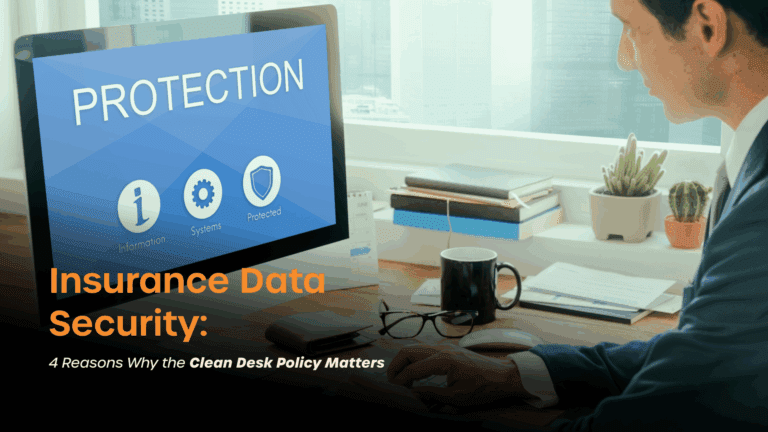
Remote Workforce Management Software: What Every Compliance Head Should Know Before 2026
- Rajnish Kumar
- 6 Mins

Summary
Remote work doesn’t have to mean compliance headaches. Remote workforce management software, when used correctly, provides visibility, protects sensitive data, and ensures policies are followed consistently.
Remote work is here to stay, and with it comes a new set of challenges for compliance teams. If you’re a compliance head, you know the stakes: one slip-up can cost your company in fines, reputation, or both. That’s why remote workforce management software has become a key tool for leaders managing distributed teams.
Think of it as your “compliance safety net.” It’s more than just monitoring hours or task completion. It helps you enforce rules, track sensitive data, and prepare for audits — all while your employees work from home or elsewhere.
Why Remote Work Poses Compliance Risks
In-office teams are easier to oversee. Networks are secure, policies are enforced physically, and IT teams can intervene quickly. Remote work, however, changes the rules:
- Employees access sensitive data from different locations.
- Personal devices and home networks introduce potential vulnerabilities.
- Regulatory requirements like HIPAA, GDPR, and SOC 2 still apply — and auditors expect proof.
For compliance heads, these changes mean the old approaches just won’t cut it. Remote workforce management software provides a structured way to address these risks without slowing down your teams.
The Risks Compliance Heads Often Overlook
Even seasoned compliance leaders can underestimate the hidden dangers of remote work:
- Data Exposure – Files may be copied to personal drives or shared via unsecured apps.
- Policy Drift – Without consistent oversight, teams may unknowingly break rules.
- Audit Bottlenecks – Manual tracking for remote teams is time-consuming and error-prone.
- Fragmented Tools – Using different apps across teams creates blind spots and gaps in control.
These risks don’t just affect IT. They can have real consequences for clients, regulators, and the company’s reputation.
How Remote Workforce Management Software Helps
Here’s how the right system makes life easier for compliance leaders:
1. Centralized Visibility
All team activity is visible from one dashboard. You don’t have to hop between apps to see who accessed which files or completed which tasks.
2. Automatic Policy Enforcement
Rules aren’t just suggested — they’re enforced. Unauthorized file transfers or risky activity can be blocked automatically.
3. Built-In Audit Trails
Every action is logged and timestamped. When auditors come knocking, you have everything documented, eliminating frantic data searches.
4. Protecting Sensitive Data
By integrating employee computer monitoring software, compliance heads can ensure sensitive information never leaves approved systems.
5. Smooth Integration
Modern workforce management systems can plug into existing HR and IT tools, so compliance oversight happens without disrupting workflows.
Why Acting Now Matters
By 2026, regulatory expectations will become even stricter. Organizations that delay implementing robust solutions risk:
- Higher fines for compliance breaches
- Longer, more complicated audits
- Increased exposure of sensitive data
- Frustration among remote teams who feel policies are inconsistent
Investing in remote workforce management software today means you’re prepared for these changes and can operate with confidence.
How RemoteDesk Makes Compliance Easier
RemoteDesk is built with compliance heads in mind. Here’s what it offers:
- Integrated Monitoring: Combines workforce management with employee computer monitoring software for complete visibility.
- Compliance for Remote Teams: Built to support GDPR, HIPAA, SOC 2, and other industry standards.
- Real-Time Alerts: Detects risky activity instantly, reducing the chance of breaches.
- Audit-Ready Reports: Automatically generates logs for audits or internal reviews.
- Scalable and Flexible: Suitable for small teams and large enterprises alike.
With RemoteDesk, compliance leaders don’t just enforce rules — they create a safe, predictable environment for remote teams to thrive.
Common Mistakes to Avoid
Even with the right tools, mistakes happen:
- Relying on Old Office-Only Tools – Traditional HR or attendance systems aren’t built for remote compliance.
- Ignoring Integration Needs – Siloed tools create gaps and blind spots.
- Choosing Generic Vendors – Not all remote workforce management software is built with compliance in mind.
- Skipping Employee Training – Systems work best when employees understand expectations and follow best practices.
Preparing for 2026 and Beyond
Compliance leaders should treat remote workforce management as an ongoing strategy, not a one-time fix. Future trends to watch:
- AI-Driven Monitoring: Systems will identify unusual activity before it becomes a breach.
- Advanced Reporting: Automated, regulator-ready documentation will reduce manual effort.
- Greater Regulatory Expectations: Expect more detailed proof of secure operations for remote teams.
The organizations that get ahead now will avoid costly mistakes and operate with confidence in a fully remote world.
Conclusion
Remote work doesn’t have to mean compliance headaches. Remote workforce management software, when used correctly, provides visibility, protects sensitive data, and ensures policies are followed consistently.
Tools like RemoteDesk combine workforce management systems with employee computer monitoring software to give compliance heads the control and confidence they need. By adopting these systems today, leaders can prepare for stricter regulations, safeguard their organization, and keep remote teams productive and secure.
1. What is RemoteDesk?
2. How does RemoteDesk ensure compliance with regulations like PHI, HIPAA & PCI DSS?
3. Can RemoteDesk integrate with our existing security and productivity tools?
4. How does RemoteDesk handle remote and hybrid workforce management?
5. What types of analytics and reporting does RemoteDesk offer?
Get Started Today
Sign up in minutes. Secure your remote
workforce with confidence.
See how RemoteDesk makes compliance and data protection effortless.




